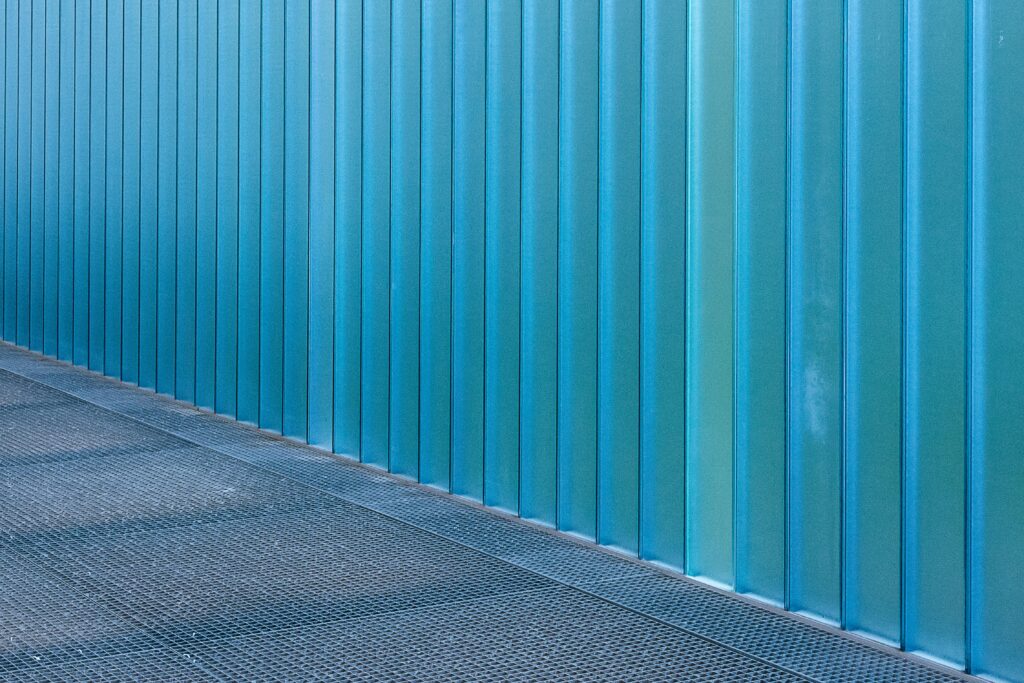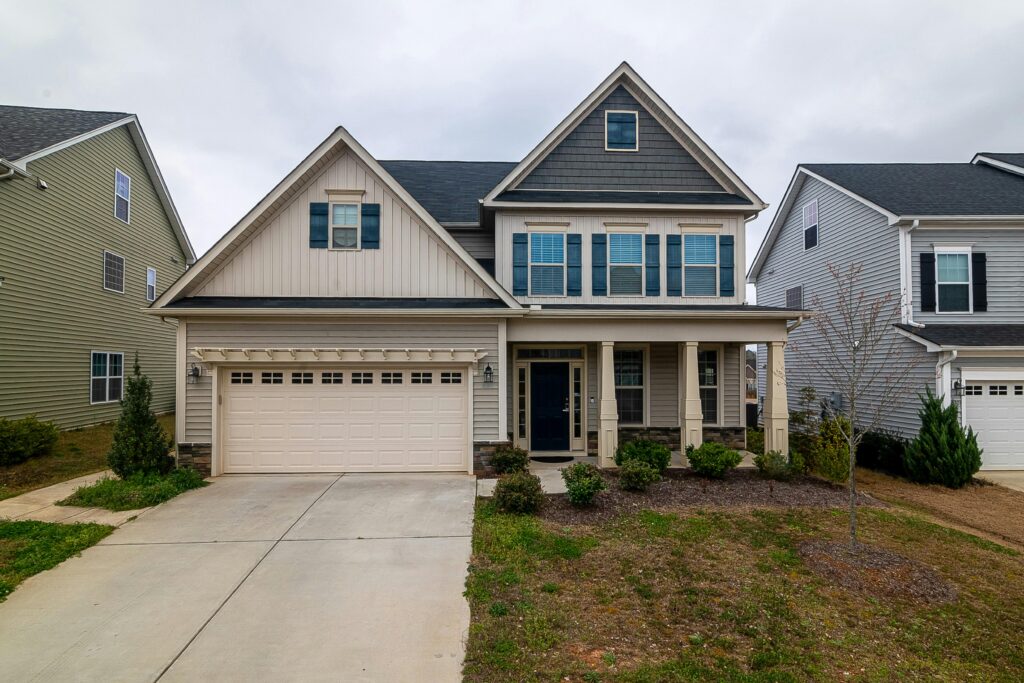Imagine standing outside your home on a crisp autumn evening, admiring the way the warm sunlight dances off your exterior walls. But beneath that beautiful facade lies a crucial decision many homeowners face: how to choose the best siding for your house. It’s not just about aesthetics; the right siding protects your home from weather, boosts energy efficiency, and even increases property value.
Choosing the best siding can feel overwhelming with so many options, from vinyl and wood to fiber cement and brick. Each material promises unique benefits, but making the wrong choice might cost you time, money, and peace of mind. In this article, you’ll learn exactly how to navigate these options with confidence. We’ll explore the most popular siding materials, their advantages, disadvantages, and maintenance needs, helping you make an informed decision tailored to your needs and budget.
Table of Contents
ToggleKey Takeaways
- Protect & Beautify: The right cladding shields your home from weather while elevating curb appeal.
- Match Material to Climate: Choose moisture-resistant options for rainy areas and insulative types for extremes.
- Balance Cost & Maintenance: Compare upfront expenses with long-term upkeep when selecting wood, vinyl, fiber cement, or stone.
- Boost Energy Efficiency: Insulated cladding and reflective finishes cut heating and cooling bills up to 20%.
- Increase Resale Value: Quality cladding can add up to 10% to your home’s market price.
- Visualize First: Use samples and design tools to preview colors and textures in natural light.
- Hire Expertise: Proper installation by experienced contractors ensures longevity and warranty compliance.
Why Choosing the Best Home Cladding Matters More Than You Think
When it comes to enhancing your home’s appearance and protecting it from the elements, choosing the best home cladding is a decision that holds far more weight than many homeowners realize. Home cladding refers to the external layer applied to the walls of your house, acting both as a shield against weather conditions and as a key element in your home’s aesthetic appeal. This crucial choice influences not only the durability and maintenance of your property but also its energy efficiency and overall market value.
Understanding what makes the best home cladding is the first step in making an informed decision. Different materials, such as wood, vinyl, brick, stone, and fiber cement, each bring unique benefits and challenges. For example, wood cladding offers warmth and a classic look but requires regular maintenance to prevent rot and insect damage. Vinyl, on the other hand, is low-maintenance and cost-effective but may not provide the same insulation benefits as fiber cement or brick.
The importance of selecting the right home cladding goes beyond aesthetics. According to a report by the National Association of Realtors, homes with quality exterior finishes can increase resale value by up to 10%. Moreover, research published by the U.S. Department of Energy highlights that effective cladding paired with proper insulation can reduce heating and cooling costs by up to 20%, making your home more energy-efficient and environmentally friendly.
To illustrate the impact of choosing the best home cladding, consider the story of the Johnson family. Living in a region with harsh winters and frequent storms, they initially installed inexpensive vinyl siding to save costs. Over time, the siding cracked and warped, leading to increased heating bills and costly repairs. After consulting with experts and investing in fiber cement cladding, they noticed immediate improvements, not only did their home look more modern and attractive, but their utility bills decreased significantly, and they felt confident their home was better protected against the weather.
Ultimately, selecting the best home cladding is a blend of understanding your local climate, personal style preferences, budget, and long-term goals for your property. In the following sections, we’ll explore various cladding options, their pros and cons, and expert tips to help you make the best choice for your home. Whether you’re building a new house or renovating an existing one, choosing the right cladding is a foundational step toward creating a beautiful, durable, and efficient home.
How to Choose the Best Cladding for Your Home: A Step-by-Step Guide
Selecting the perfect cladding for your home is no simple task. With countless options available, from wood to vinyl to stone, the decision can quickly become overwhelming. However, taking a systematic approach ensures you make a choice that enhances both the aesthetic appeal and functionality of your home. In this guide, we’ll walk you through how to choose the best cladding for your home step by step, helping you navigate materials, budgets, maintenance, and design considerations with confidence.
Step 1: Assess Your Home’s Style and Architecture
The best cladding choice complements your home’s existing style. Start by analyzing your home’s architecture:
– Modern Homes: Consider sleek options like metal or fiber cement cladding, which emphasize clean lines.
– Traditional Houses: Wood or brick cladding maintains the classic look.
– Cottages and Rustic Styles: Stone or natural wood add warmth and authenticity.
Taking photos of your home’s exterior and collecting inspiration images can help clarify the visual direction.
Step 2: Evaluate Your Local Climate and Weather Conditions
Your local climate heavily influences which cladding materials perform best:
– Humid or Rainy Areas: Choose moisture-resistant cladding like vinyl or fiber cement to prevent mold.
– Hot, Sunny Climates: Lighter colors and materials that reflect heat, such as light-colored stucco, are ideal.
– Cold or Snowy Regions: Opt for insulative cladding like insulated vinyl or wood with proper sealing.
Understanding these factors will ensure durability and reduce costly maintenance.
Step 3: Review Available Cladding Materials
Step 4: Set Your Budget and Compare Costs
Taking your budget into account is crucial:
– Determine your total budget including material and labor.
– Get multiple quotes from contractors for installation.
– Factor in future maintenance costs; some cheaper materials might require more upkeep.
Step 5: Consider Maintenance Requirements
Each cladding material demands different upkeep levels:
– Wood: Requires regular staining or painting and protection against pests.
– Vinyl: Easy to clean with soap and water, minimal upkeep.
– Fiber Cement: Occasional painting and cleaning.
– Stone: Minimal maintenance, but watch for mortar or sealant issues.
– Metal: Periodic rust checks and painting if applicable.
Being honest about how much time and effort you can invest in maintenance will guide your decision.
Step 6: Check Local Building Codes and HOA Rules
Before finalizing your choice, verify:
– Local building regulations regarding materials and fire safety.
– Homeowners Association (HOA) guidelines and restrictions on materials or colors.
Complying with these ensures a smooth approval process.
Step 7: Visualize the End Result
Visualization tools help avoid surprises:
– Use online design apps to try out different cladding on a photo of your home.
– Request samples from suppliers to see materials and colors in natural light.
– Consult with your contractor for expert opinions.
Step 8: Hire Experienced Professionals for Installation
Proper installation is key to longevity:
– Choose contractors specializing in your chosen cladding.
– Check references and past work.
– Ensure they understand warranty and manufacturer guidelines.
Bonus Tip: Energy Efficiency and Insulation
Some cladding materials provide additional insulation which can reduce energy bills. For example, insulated fiber cement panels or cladding combined with a proper underlayer can significantly improve thermal efficiency.
Summary Checklist for Choosing the Best Cladding
– Analyze home style and desired aesthetic
– Understand climate-specific needs
– Compare materials’ pros, cons, and costs
– Align choice with your budget and maintenance capabilities
– Check building codes and HOA restrictions
– Visualize with samples and design tools
– Hire qualified professionals for installation
– Consider energy efficiency benefits
Selecting the best cladding for your home is a journey that balances beauty, practicality, and budget. By following these step-by-step guidelines, you’ll be empowered to make an informed decision that protects and elevates your home for years to come.
Remember, your choice of cladding isn’t just about looks, it’s about creating a resilient, welcoming environment that reflects your unique style and stands strong against the elements.

Tips for Choosing the Best Home Exterior Cladding:
✅ Research Material Types: Understand options like wood, vinyl, fiber cement, and brick to find what suits your climate and style.
❌ Avoid Impulse Decisions: Don’t pick a cladding just for looks; consider durability and maintenance needs.
💡 Consider Climate Impact: Choose materials that withstand your area’s weather , for example, vinyl resists moisture well in rainy regions.
✅ Focus on Insulation Properties: Good cladding can improve your home’s energy efficiency by providing extra insulation.
❌ Don’t Ignore Installation Quality: Even the best material fails if poorly installed; hire experienced contractors.
💡 Prioritize Low Maintenance Materials: Select cladding that won’t require frequent painting or repairs to save time and money.
✅ Factor in Cost and Budget: Balance upfront costs with long-term maintenance and replacement expenses.
❌ Skip Over Local Building Codes: Ensure your cladding choice complies with local regulations for safety and permits.
💡 Think About Aesthetic Compatibility: The cladding should complement your home’s architecture and neighborhood style.
✅ Evaluate Environmental Impact: Opt for sustainable or recyclable materials if eco-friendliness is a priority for you.
Concepts Key
Choosing the perfect siding for your home is much more than a simple aesthetic decision, it’s a blend of science, art, and practical understanding. The concept of “revestimiento” or siding, when unpacked, reveals a framework that can transform the way your home interacts with its environment, protects its structure, and expresses its personality.
The Role of Siding as a Protective Shield
Imagine your home as a knight clad in armor, standing firm against relentless weather battles. Siding acts as this armor, a critical barrier between the raw elements and the fragile interior that houses families and memories. This protective function means siding materials are selected not only for looks but for their ability to resist moisture, temperature fluctuation, UV exposure, and physical impacts.
The key players in this arena vary from traditional wood to contemporary vinyl, fiber cement, or metal, all differing in their durability and resilience. Understanding how each material “fights” against weather is essential. For instance, fiber cement’s ability to endure fire and pests can be likened to a flameproof shield, while vinyl’s resistance to rot echoes the qualities of a water-repelling cloak.
Aesthetic Expression: The Home’s Visual Voice
Just as a poet chooses words to evoke emotion, siding casts the first impression and defines the architectural character of a home. Whether the house shouts bold modernism with sleek panels or whispers timeless charm through rustic shingles, siding color, texture, and style contribute to this language.
This concept transcends mere decoration, it shapes neighborhood identity and personal taste. In many ways, siding becomes the facial expression of a home; it communicates who the homeowners are and what values they cherish. It is the handshake before the conversation, setting expectations and moods.
Energy Efficiency and Environmental Interaction
Beneath the surface beauty, siding plays a quiet, crucial role in the home’s energy narrative. The right siding material can act like a thermal cloak, wrapped tightly to conserve warmth in cold seasons and reflect heat during summer. This thermal interplay reduces energy consumption and molds living comfort.
Consider this an invisible partner in managing nature’s whims, subtly influencing your utility bills and carbon footprint. Modern siding innovations often incorporate insulation or reflective properties, turning the home into a smarter ecosystem that breathes, conserves, and interacts respectfully with its surroundings.
Maintenance and Longevity: The Test of Time
Siding is not static; it ages, weathers, and requires care. The longevity of materials relates closely to how much time, effort, and expense is devoted to their maintenance. This introduces another layer of understanding, choosing siding is almost like choosing a relationship dynamic.
Materials like wood may demand nurturing with periodic painting and sealing, analogous to tending a garden to keep flowers blooming. Meanwhile, vinyl and metal might resemble more autonomous companions, requiring minimal intervention to maintain their appearance and function. The expected lifespan and maintenance rigor become integral concepts when envisioning the future harmony between homeowner and siding.
Environmental Impact and Sustainability
In the modern world, siding choices echo beyond the home’s immediate perimeter. The ecological footprint of producing, installing, and ultimately disposing of siding materials is a concept gaining prominence. Sustainable siding options, such as reclaimed wood or recycled metals, resemble eco-conscious storytellers that narrate values of stewardship and responsibility.
This perspective invites one to view siding not just as an isolated feature but as a chapter in the larger environmental narrative, connecting personal choice with global impact.
Exploring these key concepts illustrates that siding is a multifaceted element that entwines protection, identity, efficiency, relationship, and ecology. It’s a material embodiment of your home’s story, telling tales of endurance, style, comfort, and conscience, ultimately defining what “best” means for your unique sanctuary.
Frequently Asked Questions (FAQs)
❓ What factors should I consider when choosing the best home cladding?
When selecting the best home cladding, consider durability, climate compatibility, maintenance requirements, aesthetic appeal, and budget. The right cladding protects your home and enhances its look, so balancing these factors is key.
❓ Which materials are best for home cladding?
Common cladding materials include vinyl, wood, fiber cement, brick, and stone. Each has unique advantages: vinyl is low-maintenance and affordable; wood offers natural beauty but requires upkeep; fiber cement is durable and weather-resistant; while brick and stone provide timeless elegance.
❓ How does climate affect the choice of home cladding?
Climate heavily influences the best cladding option. For humid or rainy areas, moisture-resistant materials like fiber cement or vinyl are ideal. In hot climates, materials with good thermal insulation like brick can help regulate indoor temperature effectively.
❓ Is professional installation necessary for home cladding?
While DIY installation is possible for some materials like vinyl, professional installation is recommended to ensure proper fitting, longevity, and warranty compliance. Incorrect installation can lead to issues such as water damage or reduced insulation.
❓ How often should home cladding be maintained or replaced?
Maintenance frequency varies; vinyl cladding requires minimal upkeep, while wood needs regular painting or staining. Generally, well-chosen cladding can last 20 to 50 years or more with proper care, but inspection every few years helps catch issues early.
Choosing the best home cladding sets the foundation for your home’s protection and style. Understanding these frequently asked questions will guide you in making an informed, confident decision.



One Response